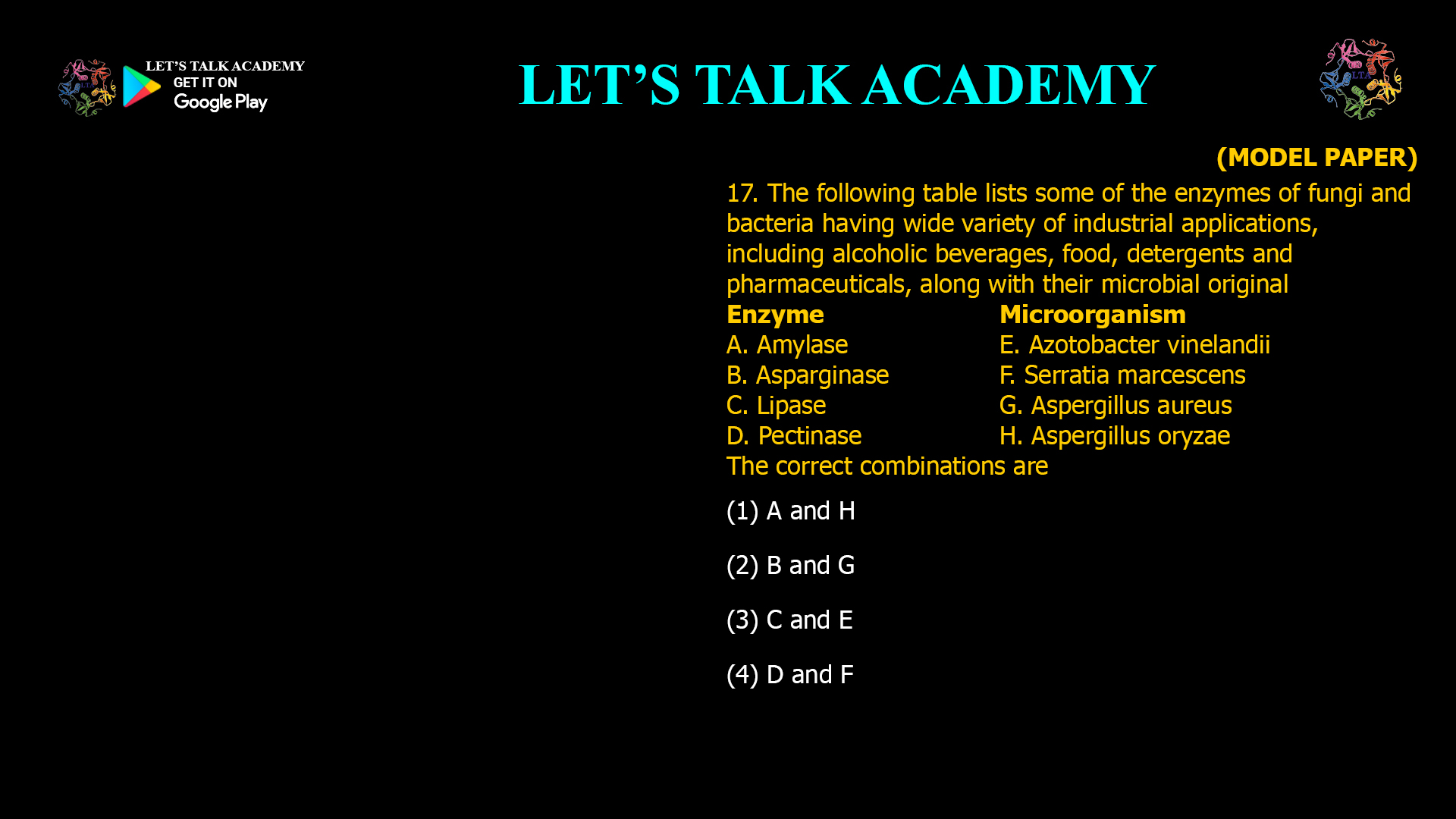- The following table lists some of the enzymes of fungi and bacteria having wide variety of industrial applications, including alcoholic beverages, food, detergents and pharmaceuticals, along with their microbial original
Enzyme Microorganism
A. Amylase E. Azotobacter vinelandii
B. Asparginase F. Serratia marcescens
C. Lipase G. Aspergillus aureus
D. Pectinase H. Aspergillus oryzae
The correct combinations are
(1) A and H (2) B and G
(3) C and E (4) D and FCorrect answer: (1) A and H
In this question, you have to pick the enzyme–microorganism pair(s) that correctly match important industrial enzymes with their microbial sources.
Given pairs:
-
A. Amylase
-
B. Asparaginase
-
C. Lipase
-
D. Pectinase
-
E. Azotobacter vinelandii
-
F. Serratia marcescens
-
G. Aspergillus aureus
-
H. Aspergillus oryzae
The options present pairs like “A and H”, “B and G” etc., and you must choose which pair is correct.
Why A and H is correct:
-
Amylase is a major industrial enzyme used in starch processing, syrups, baking, brewing and detergents.
-
Fungal α‑amylase for commercial use is classically produced from Aspergillus species, especially Aspergillus oryzae, which secretes large amounts of extracellular amylases used in food and biotech industries.
-
Therefore, the pair “Amylase – Aspergillus oryzae” (A and H) is correct.
Why other suggested pairs are not correct in this list:
-
B and G (Asparaginase – Aspergillus aureus)
-
Clinically used L‑asparaginase (for leukemia treatment) is mainly from bacteria such as Escherichia coli and Erwinia chrysanthemi, not from “Aspergillus aureus” (which is not a standard industrial source).
-
-
C and E (Lipase – Azotobacter vinelandii)
-
Azotobacter vinelandii is known for nitrogen fixation and biopolymer (e.g., PHB) production, not as the main industrial lipase producer. Industrial lipases typically come from Candida, Rhizopus, Pseudomonas, etc.
-
-
D and F (Pectinase – Serratia marcescens)
-
Industrial pectinases used for juice clarification and fruit processing are mainly produced by fungi such as Aspergillus niger and Aspergillus oryzae, not typically from Serratia marcescens.
-
So only the pair A–H (Amylase from Aspergillus oryzae) is clearly correct among the options.
-



